Siquijor is a small island province1 of the Philippines located in the Central Visayas2 Region (Region3 VII)4. The people are called Siquijodnons.
Geographically, Cebu is to the north, Negros to the west, Bohol to the northeast, Camiguin5 to the east, and to the south, across the Bohol Sea, is Mindanao.
Siquijor is so intriguing, mysterious, exciting to explore – the reasons why I included it in my local travel bucket list. We arrived in this island a bit hesitant, yet ready to explore its natural beauty and culture. A couple of my friends who knew I would visit this island warned me about its reputation of sorcery and magic, even if they themselves have not visited it. We heard stories about what happened to a couple of tourists who were physically affected during and after their visits, but all these needed to be verified. Talk about shady reputation!
We sought bloggers and vloggers, and became assured and convinced with what we read and saw, so we were bent on pursuing this vacation. However, to be on the safe side, my companions and I made a pact not to say anything negative, never to point towards certain places or things, and to just enjoy the view and destinations.
Here are 20 facts about Siquijor, the province1:
1. It is the smallest province in the Central Visayas Region2, and the third smallest province in the Philippines in terms of population and land area, next to Camiguin5 and Batanes6 (the smallest) at 327 sq.k. or 126 sq.mi., and a coastline 102 km (63 mi) long.
2. This province has 6 municipalities7: Enrique Villanueva, Larena, Lazi, Maria, San Juan, and Siquijor (the capital, and yes, it is also called Siquijor6). See a related post: Now You Know: THE SIX MUNICIPALITIES OF SIQUIJOR
3. This island province1 is indeed mysterious! First is the origin of the island. They say the island surfaced from the depths of the ocean during a great storm which once engulfed the region3. This storm was followed by a strong earthquake that shook the earth and sea. Amidst the lightning and thunder, an island rose from the depths of the ocean and became Siquijor island. In fact, how can you explain that during modern times, farmers have unraveled giant shell casings under farm plots?
4. Siquijor is commonly called The Mystical Island and is associated with mystic traditions. It is widely believed since the olden times that the natives of this island were men of mystery and magic who can conjure and control spirits. There are folk healers whose practices include spiritualism, along with the preparation of brews and herbal concoctions for love and health problems.
5. It has a long-time reputation as a place of magic, sorcery, mystical traditions. It is also well known for its festivals that focus on healing rituals where incantations are sung, while the old folks make potions out of herbs, roots, insects, and tree barks. However, when we visited the island for a day on March 2019, we only saw love potions sold in small bottles and mystic wine in large bottles, along with voodoo dolls and other local souvenirs.
The Siquijodnons are predominantly Roman Catholics yet their island province1 is still known as The Mystical Island. Healers and herbalists all over the country annually come together in this island during Holy Week to perform healing, and to participate in the preparation of concoctions made from a variety of tree barks, roots, herbs, insects and other ingredients. These are gathered from the forests, sea, caves, and cemeteries during the 7 Fridays of the Lenten season. The resulting brews are deemed to have healing powers. Thus, it is also called The Healing Paradise.
Perhaps, a tourist needs to visit this island during Holy Week to witness this side of the culture of Siquijor.
6. During the Spanish colonial period in the Philippines, the Spaniards called Siquijor Isla del Fuego (Island of Fire) because the island gave off an eerie glow at night from the great swarms of fireflies that lived in the branches of the abundant tugas or molave8. See my post: Now You Know – SIQUIJOR: ITS LEGEND, HISTORY, TRADITIONS, AND BELIEFS to know more about this island’s legend, tradition, history and beliefs.
7. Each municipality7 showcases centuries-old Catholic churches, amidst the mystical traditions of the early Siquijodnons way before the Spaniards arrived. The province1 has some of the oldest churches in the Philippines: Our Lady of Divine Providence Church (Santa Maria Church) in the municipality of Maria, established in 1887; Our Lady of Mount Carmel Church (Mount Carmel Church) in the municipality of Enrique Villanueva; Augustine Parish (Macapilay Church) in the municipality of San Juan, built in 1863; St. Francis of Assisi Church (Siquijor Church) in the municipality of Siquijor, established in 1783; St. Isidore the Farmer Church (Lazi Church), or San Isidro Labrador Parish Church in the municipality of Lazi, founded in 1857 (see a related post: SAN ISIDRO LABRADOR PARISH CHURCH AND CONVENT, SIQUIJOR); and, Saint Vincent Ferrer Church (Larena Church) in the municipality of Larena, erected in 1836. See a related post featuring all these churches: Now You Know: SIQUIJOR’S 6 ROMAN CATHOLIC CHURCHES
Today, this province1 showcases the unique Philippine culture of blending Catholicism with traditional religious practices – a major part of its people’s cultural heritage, identity and character.
8. This coralline island is predominantly hilly, with many places reaching the sea, producing steep cliffs, and creating breathtaking panoramic views, perfect for your photos! It is surrounded by limestone materials, mangroves, coral reefs, and a coastline which boasts of white sand beaches that stretch up to 102 km. See related posts about two beaches I visited: SERENE AND SPONTANEOUS SALAGDOONG BEACH, SIQUIJOR and PALITON BEACH: THE LITTLE BORACAY OF SIQUIJOR.
9. Siquijor’s central portion is mountainous. The highest point of the island is Mount Malabahoc, locally known as Mount Bandila-an, at 628 meters (2,060 ft) in elevation. One can still see fossils and shells on this mountain.
10. This island province1 is proud of its 400-year old Balete9 tree, located in Barangay10 Campalanas, in the town of Lazi. That is one of the oldest trees in the country and what makes it unique is the spring water flowing from its roots, which was turned into a natural fish spa for tourists. See a related post: ENCHANTING 400-YEAR-OLD BALETE TREE AND FISH SPA, SIQUIJOR
11. The island has wonderful waterfalls like the Cambugahay Falls in the town of Lazi which I was able to visit (see a related post: TAKE A TARZAN-LIKE DIVE AT CAMBUGAHAY FALLS, SIQUIJOR!). Cangbangag Falls, in the town of Larena, and Lugnason Falls, in the town of San Juan, are two other falls you can visit.
 Cambugahay Falls
Cambugahay Falls
12. I was surprised to know that it has 46 caves: 4 in the town of Enrique Villanueva, 17 in Lazi, 6 in Maria, 5 in San Juan, and 12 in Siquijor. The only town without a cave is Larena (based on my research).
13. This island province1 was dubbed as the “Marine Paradise of Central Visayas4” after it was proclaimed a marine reserve11 and tourist destination in 1978 by Proclamation No. 1810. In line with this, the Philippine Tourism Authority (PTA) was charged with converting it into a principal tourist zone.
14. Fishing is the prime occupation, with Bohol Strait, Mindanao Sea and Siquijor Sea as the chief fishing areas. Fishponds are 15 hectares long, while swamp lands cover 71 hectares.
15. The island has 3 seaports: Larena (the biggest and main entry point of the province), Lazi and Siquijor.
16. The main spoken language is Cebuano, with English often used as a second language. Filipino is understood but rarely used and some Spanish words are spoken and understood.
17. The coral reefs ringing the island offer some of the best diving in the Philippines for snorkelers and scuba divers. Dive courses are conducted by several dive operators in this island.
18. Fossils of the giant clam, Tridacna, are often encountered in the plowed inland fields of this island. On the hilltops, there are numerous shells of the molluscan species presently living in the seas around the island. Siquijor was probably formed quite recently, geologically speaking.
19. Panglao Island, which is part of the province of Bohol and more than 80 km away, has a similar composition of the soil which is found throughout the whole island of Siquijor.
20. There are many festivals held in this island: Tubod Festival(March 19), Lenten Festival of Herbal Preparation (Holy Thursday and Good Friday, dates vary), Folk Healing Festival (Black Saturday, date varies), Tang Alap (Easter Sunday, date varies), Canoan Festival (May 3), Saging Festival (May 15), Lubi Festival (May 21/24), Pamukad Festival (July 16), Bugwas Festival (between August 27-30), Araw ng Siquijor with Solili (third week of September, including September 17), Dilaab Festival (October 1). See my post: Now You Know: THE FESTIVALS OF SIQUIJOR
See my other posts about Siquijor:
SAN ISIDRO LABRADOR PARISH CHURCH AND CONVENT, SIQUIJOR
Now You Know: CANG-ISOK – SIQUIJOR’S OLDEST KNOWN HOUSE
GET BEWITCHED AT HAPITANAN, SIQUIJOR
The information was obtained from the Wikipedia page “Siquijor”12 and “List of festivals in the Philippines”13, https://en.wikivoyage.org/wiki/Siquijor, https://dumagueteinfo.com/other-destinations/siquijor-island/siquijor-travel-guide/, https://www.tripzilla.ph/siquijor-visita-iglesia-guide/102, https://www.vigattintourism.com/tourism/articles/Siquijor-An-Island-that-Rose-from-the-Sea, and https://www.cocogrovebeachresort.com/special-events/siquijor-fiestas/
Now, readers, you might ask, “How do I get to Siquijor”? Sorry, there are no direct flights to Siquijor, except from Mactan-Cebu International Airport, using Air Juan14. Air Juan has the only daily flight to and from Siquijor from Cebu: Mactan-Cebu International Airport to Siquijor Airport (ETD 12:50 pm – ETA 1:30 pm) and Siquijor Airport (ETD 2:00 pm – ETA 2:40 pm). It only takes 40 minutes via a 9-seater Cessna Grand Caravan land plane!
Sigh, this island province, to-date, has only a small airport, about 5 km west of Siquijor town. Construction to expand it into a full airport capable of handling international slights started in 2017, but as of early 2019, the project appears far from completion.15
The nearest reasonably large airport is in Dumaguete City16 which has no international flights, but is well-connected to domestic destinations, including all main airports for international arrivals. The main air hub of the region is Mactan-Cebu International Airport in Metro Cebu. Since mid-2018, the new Panglao Airport in Bohol province also handles international flights. A tourist can generally reach Siquijor by ferry from any of these places.15
What we did was fly from Manila to Dumaguete City16, with a large airport near this island, 25 km away, about a little over an hour’s flight only. We stayed there for a couple of days, then rode an OceanJet 17 from the Dumaguete Port to Siquijor (PHP380, one way), for a day tour only. Of course, seniors get a discount so do not forget to bring your Senior Citizen cards!
And, dear readers, if you plan to visit Siquijor, why not buy plane tickets during promotional sales of airlines or travel agencies to get the lowest possible price?
My group rode a tricycle to the Dumaguete City16 Port, took the first trip of the fast OceanJet17 at 7:20 am, and the trip only took about an hour. An LED screen provides a movie or you can just play a game in your cellphone or IPad, go over and edit pictures/videos which you took the previous day/s, or take a nap.
You can also Google other fast crafts or ferries for your Dumaguete-Siquijor-Dumaguete trip.
You can also take the slower and cheaper ferries, taking about 2 hours, one way. It is best to book tickets a day beforehand to be sure you have seats and need not wake up so early to fall in line, especially for the first trip in the morning.
Joining the first trip is best if you plan not to stay overnight in Siquijor and be aware of travel time from your last tour-stop and the Larena seaport.
If you are coming from another place, like Manila or neighboring islands, check transportation options and schedules online, and book a ferry a day before for your visit to this island.
You need to pay a Terminal Fee of PHP25 per person before leaving the Dumaguete16 port.
I know what your next question is: how do I explore the island, especially since I will not stay overnight?
Well, upon arrival at the port in Siquijor, you have several options for a day tour of the island, depending on your budget, driving skills, length of stay in the island, and the number of persons in your group:
1. For groups with seniors and kids, it would be best to hire an air-conditioned van at PHp3,500 per day. My group availed of one-day Siquijor Coastal Tour (see: I will place a link here about the main post) offered by Yane’s Adventures Van Services18 after we arrived at the port of Siquijor.
We arrived at the port of Siquijor and walked towards its gate. As expected, we encountered different Siquijodnons who offered island tours. We did not know anyone but we were lucky to have chosen Yane’s18 and its very cheerful and accommodating driver, Jimmy Bueno.
Jimmy showed us a laminated map of the island, complete with the various natural and man-made attractions we could see. However, we could only stay for less than 24 hours, so we selected destinations based on our online research among bloggers and Jimmy’s experience as a driver in the island, with the goal of not missing our 3:50 pm boat schedule back to Dumaguete City16.
There were so many natural and historical destinations but our group decided to choose only 6 places to visit. See our experience below.
2. Your group can book a tricycle island tour for PHP1,000 for one whole day. The tricycle is the main mode of transportation in the island. You can negotiate the places to be included in your tour so you better research ahead of time the “must visit” destinations. NOTE: Taking the regular tricycle from one town to another in this island might be more expensive so negotiate among the tricycle drivers just outside the port for a “special trip”.
3. You can rent a motorcycle and explore the island on your own, if you can drive. Plan your route before your arrival and when in doubt, or in case you get lost, the locals are hospitable and can point you to the right direction. Just Google bloggers regarding this matter because I have no personal experience about this mode of transportation. I was told that you will be asked to fill up a form.
Rest assured that the circumferential coastal road of the island is safe and well maintained. I did not notice but just a heads up because I read somewhere that there are no street lights in the island, so it might not be safe to drive alone at night.
4. There are also jeepneys with regular routes between municipalities as well as tricycles within a municipality7. This could prove to be cheaper to go around the island, especially if you will stay for more than a day. However, you may need to negotiate “special trips” for certain destinations you may want to visit that are far from the circumferential road.
For tourists staying at least overnight in the island, you can also inquire and arrange tours at the front desk of your resort.
My group had a chance to go to this island only for a day tour on March 2019, using a fast craft of OceanJet17. We bought a ticket upon arrival in Dumaguete16 so we will not have difficulty waking up very early to do all the ticketing right before boarding in the morning.
We skipped a lot of sites near the Siquijor port but we briefly stopped at the “I love Siquijor” sign for a group picture.
We only chose six destinations thereafter, for our SIQUIJOR COASTAL TOUR since the schedule of the OceanJet17 back to Dumaguete City16 was at 3:50 pm:
1. Paliton Beach, dubbed the “Little Boracay19of Siquijor”, located in the municipality7 of San Juan – see: PALITON BEACH: THE LITTLE BORACAY OF SIQUIJOR
2. The 400 year old Balete tree and Fish Spa, located in the municipality7 of Lazi. See ENCHANTING 400-YEAR-OLD BALETE TREE AND FISH SPA, SIQUIJOR
3. Hapitanan, where you can show your best witch poses and enjoy fresh coconut (buko), among others, also located in Lazi – see: GET BEWITCHED AT HAPITANAN, SIQUIJOR
4. San Isidro Labrador Church and Convent, also located in Lazi – see: SAN ISIDRO LABRADOR PARISH CHURCH AND CONVENT, SIQUIJOR Left photo by Greg, 3 February 2010, featured in commons.wikimedia.org/wiki/File:St_Isidore_the_Laborer_Church_in_Lazi,_Siquijor.jpg
Left photo by Greg, 3 February 2010, featured in commons.wikimedia.org/wiki/File:St_Isidore_the_Laborer_Church_in_Lazi,_Siquijor.jpg
We were hungry almost midday and we asked our kind driver, Jimmy, where to eat fresh seafood along the way. He brought us to a small, open restaurant called El Monte Café & Restaurant. 
It offers an a la carte menu consisting of seafood, chicken and vegetables dishes as well as breakfast and budget options. 
It was still early for lunch so there were no customers around. We were also told that the seafood supplier did not deliver that day, so seafood dishes were not available. Anyway, we all ordered Chicken Barbecue. We also ordered Chopsuey to be shared. It took some time for the chicken orders to be grilled but we were satisfied with the degree of doneness, presentation, and taste when they were served. The chopsuey, however, had an average taste perhaps due to the milky looking, yet viscous sauce, but at least the vegetables were not that overcooked.
I strongly recommend that you plan where to eat for your day tour, with the help of your driver/tour guide. We just wanted a quick meal and settled for what was available.
5. Cambugayan Falls, a three-tiered waterfalls where you can swim and take the Tarzan-Dive Challenge, also located in Lazi – see: TAKE A TARZAN-LIKE DIVE AT CAMBUGAHAY FALLS, SIQUIJOR!
Take the Tarzan-like Challenge at Cambugahay Falls
6. Salagdoong Beach, where you can swim, sunbathe, and take the Cliff Dive Challenge, located in the municipality7 of Maria – see: SERENE AND SPONTANEOUS SALAGDOONG BEACH, SIQUIJOR
What I liked about our day tour of the island is the well-paved and wide Circumferential Road of the province. Most popular attractions were along this road, or can be easily accessed from it.
Souvenirs and pasalubong20 are available in several places in the island so it is best to ask your guide where to buy handicrafts, key chains, t-shirts, herbal oils, local delicacies, etc.


We did not witness any witchcraft, sorcery, or scary incidents. For me, based on our short stay in this island, the mystique of this province1 lies in its beautiful waterfalls, enchanting beaches, century-old trees, relaxing fish spa, interesting history, and warm hospitality of its people. Trust Tita S!
Our driver, Jimmy, respectfully reminded us to finish early in our last destination so we will not be late for the 3:50 pm departure of our OceanJet17 ride back to Dumaguete City16. He was also so kind to get seats for us, instead of us having to fall in line to do so. So, dearest future visitors of Siquijor, look for Jimmy as your driver. He is so professional, accommodating and pleasant.
You need to pay a Terminal Fee of PHP25 before leaving the Larena Port of Siquijor. Senior Citizens are discounted so be sure to be ready with your Senior Citizen cards.
The following are tips when visiting Siquijor:
1. Have an open mind. Set aside the reputed negative image of this island. Google bloggers and vloggers who went ahead to be assured that you will enjoy your stay. Plan the date/s, how long you will stay, and select destinations wisely. Do not expect first class facilities in beaches, falls and other places you visit. Just appreciate its simple set up and make this trip your chance to commune with nature.
2. Check the weather beforehand. Visit this island during the summer months, preferably on a weekday, to avoid the influx of locals in the beaches and to be sure there are no typhoons to spoil your vacation.
3. Book your ferry or fast craft trip ahead of time to be sure you will have seats and need not wake up early to line up for a ticket going to this island province, especially if you will take the first trip in the morning.
4. For snorkelers, bring your own snorkeling gear and flippers.
5. Do not forget to apply sunscreen before your trip. Bring your sunscreen so you can reapply when needed.
6. Bring enough PHP cash. Research ahead of time the location of banks in certain towns for ATM and foreign card transactions. Do not forget small amounts like PHP10, 20, 50 for entrance, parking, terminal fees, and other minor fees.
ATM machines are available in Philippine National Bank (PNB) Larena (but only Visa cards are accepted) and Metro Bank along the main road in Siquijor town, accepting MasterCard and Visa.15 https://en.wikivoyage.org/wiki/Siquijor
7. Fully charge your cell phones, cameras, power banks, and extra batteries.
8. Bring your own snacks, refillable water bottles, bamboo/metal drinking straws, etc., to destinations, but just be sure to dispose trash in proper bins. Be eco-friendly!
9. For spelunking (cave exploration as a hobby), always wear helmets and clothes which can still be comfortable when wet. Wear appropriate and comfortable footwear. Bring flashlights and extra clothing.
10. Secure belongings using a waterproof container, or designate a companion for the safekeeping of your group’s belongings.
11. Seniors, do not forget to bring your Senior Citizen card with you all the time to avail of your discount.
12. Go early to popular destinations to avoid large crowds.
13. It would be best to hire a “special trip”, i.e., a vehicle just for you and your companions for the day; because I was told that there is a lack of public transportation in the island. But no worries, once you exit the Siquijor port, there will be offers all over, so negotiate well, based on researched range of rates.
14. Just to be on the safe side, assign a companion to watch over your belongings when you swim or snorkel. Someone whispered to me that the crime rate in the island is very low. They say that locals are afraid to steal or do something bad because of their fear of the “needle”, referring to being the targets of the voodoo dolls used by certain locals. Perhaps, other tourists might be the culprits, who knows?! Just be careful, ok?
Seniors, Siquijor can be toured for a day, you just have to prioritize the places you will visit. If you want to see more than what we experienced, then add a day or two. Sorry, but we did not encounter any sorcerer or witch. Instead, we found the island-province very peaceful, safe, unpolluted, and the locals as hospitable, cheerful and friendly.
Bottomline, Siquijor is indeed a Mystical island. Be awed and fascinated by its raw beauty – its history, culture, white sand and pristine beaches, falls, hundred-year-old trees, springs, caves, mountains, and hospitable people. Yes, it is also a Healing Paradise! My visit of the island was therapeutic in a way – the captivating natural beauty of the Siquijor, the fresh breeze amidst the clear water sand white sand beaches we visited, such a peaceful island – all these, and more, restored the good vibes I needed to feel good and happy. This island is indeed so beautiful, with its unique character and simple charm! Perhaps I should revisit to see the fireflies at night when in season, and during one of its festivals to unravel more of its spiritualism and mystic, and then some!
You can visit the provincial government’s website for the list of accredited accommodations and their room rates. I cannot open the website cited by Wikipedia, www.siquijor.gov.ph, but I found its Facebook account: https://www.facebook.com/siquijorgov/.12
The Provincial Government of Siquijor holds office at the New Capitol Building, Pulangyuta, Siquijor 6225, Siquijor, with telephone numbers (035) 480-9173 and 480-9076, telefax (035) 344-2088.
We paid for our Siquijor Coastal Tour and all comments are personal, based on my experience in this province1. At this point, I can say that I demystified the mystical island of Siquijor!
Did you find this post informative? I would like to hear from you re your visit to Siquijor. Simply scroll and click “Leave a comment”.
See other interesting places through other posts in this category and other categories of SCapades, Pinoy Delights, and Smart Travelers – Foreign Travelers Ask, Now You Know, and Say, Say, Say. Happy reading, and I hope that you will appreciate what I shared and some of the featured destinations will be part of your future travel plans!
Do share this post with your Facebook friends, follow me by clicking on the bottom right corner of your device, and do not forget to like this post. Thank you.
– – – – – – – – – – – – – – – – – – – – – – – – – –
The following terms are defined for interested readers, especially non-Filipinos, those with “Senior-Moments”, and those too busy or lazy to Google such terms:
1A province is the primary administrative and political division in the Philippines. It is the second-level administrative sub-division of a region3. There are 81 provinces (called “lalawigan”) in the Philippines. Each province is governed by an elected legislature called the Sangguniang Panlalawigan and by an elected governor. Remember, a province in the Philippines is divided into cities9 and municipalities5 (or towns), which in turn, are divided into barangays10, formerly called barrios. The information was obtained from Wikipedia page “Provinces of the Philippines.”21 See a related post: Foreign Seniors Ask: WHAT ARE PROVINCES IN THE PHILIPPINES?
2Visayas is one of the 3 major geographical divisions of the Philippines. It covers 3 administrative regions3: Central Visayas4, Eastern Visayas and Western Visayas. It consists of 6 major islands (Bohol, Cebu, Leyte, Negros, Panay and Samar), mostly surrounded by the Visayan Sea, and is composed of 16 provinces1, according to Wikipedia page “Visayas”.22 Visayas is located at the middle part of the country; the 2 other geographical divisions of the Philippines are Luzon (in the northern part) and Mindanao (in the southern part).
3A region is the first-order administrative division in the Philippines. There are 17 regions in the Philippines, based on geographical, cultural and ethnological characteristics. It is further subdivided in provinces1, composed of cities and municipalities7 (or towns), which in turn, are divided into barangays10. The regions were initially identified in 1972, through Presidential Decree No. 1 of President Ferdinand Marcos. Since then, other regions have been created and some provinces have been “transferred” to another region. The information was obtained from Wikipedia page “Regions of the Philippines.”23 See a related post: Foreign Seniors Ask: WHAT ARE THE REGIONS OF THE PHILIPPINES?
4Central Visayas (Region VII) of the Philippines is a Philippine region3 located in the island group of Visayas2, with Cebu City as its regional center. It has 7 local government units24 (LGUs): Bohol, Cebu, Cebu City, Lapu-Lapu, Mandaue, Negros Oriental, and Siquijor. The information was obtained from Wikipedia page “Regions of the Philippines.”23
5Camiguin is the second smallest province1 in the Philippines, both in population and land area, after Batanes6. This island province is located in the Bohol Sea, geographically part of the Northern Mindanao Region (Region X), and formerly part of Misamis Oriental province. The provincial capital is Mambajao, also the province’s largest municipality7 in area and population. It is famous for its sweet lanzones (see related post – I will place the link here) to which the annual week-long Lanzones Festival is dedicated, held every third week of October. The information was obtained from Wikipedia page “Camiguin.”25
6Batanes is the smallest province1 in the Philippines, both in population and land area. This archipelago province is the northernmost province of the country, and is located in the Cagayan Valley Region (Region II). Its capital is Basco, located in the island of Batan. The entire province is listed in the UNESCO tentative list for inscription in the list of World Heritage Sites (see a related post – I will place a link here). Seven intangible heritage elements of the Ivatan26 are undergoing a process to be included in the UNESCO Intangible Cultural Heritage Lists between 2018-2025. The information was obtained from Wikipedia page “Batanes.”27
7A municipality is a small, single urban administrative division, or local government unit (LGU)24, in the Philippines which has corporate status and powers of self-government or jurisdiction as granted by law. It is a unit under a province1, subdivided into barangays10, and is called town, or bayan. In the Philippines, a municipality is headed by a mayor, a vice mayor and members of the Sangguniang Bayan (legislative branch). It can enact local policies and laws, enforce them, and govern its jurisdictions. It can enter into contracts and other transactions through its elected and appointed officials, and can tax as well. It enforces all local and national laws. The information was obtained from Wikipedia page “Municipalities of the Philippines.”28
8Molave is a large Philippine timber tree (Vitex parviflora), known for its dense, durable, yellow wood. It was once used extensively in furniture, boats, etc. as a valuable construction material, but due to habitat loss and overharvesting, it is now classified as endangered by the Philippine Department of Environment and Natural Resources. The information was obtained from Wikipedia page “Vitex parviflora.”29
9A balete tree, balite or baliti, refers to several species of the trees endemic to the Philippines, from the genus Ficus (with large, thick, or stiff leaves), of the family Moraceae. Members of this genus are characterized by possessing a white to yellowish latex, a unique inflorescence, and a distinctive pollination system, i.e., involving a specific wasp species (i.e., fig wasp of the family Agaonidaeas pollinators). Its aerial roots which reach the soil grow into it and thicken into additional trunks. The growing roots encircle the host tree and appear to strangle the latter. The host tree eventually dies and rots, leaving a hollow cylinder of roots, which have now become the trunks of the balete tree.30
10A barangay in the Philippines is the smallest administrative division in the Philippines, headed by a barangay captain, aided by a Sangguniang Barangay (Barangay Council). It is the native Filipino term for a district or village. It was formerly called a barrio. In a metropolitan area, a barangay is an inner city neighborhood, a suburb, or a suburban neighborhood. The word barangay originated from the term “balangay”, a kind of boat used by a group of Austronesian people who migrated to the Philippines. A number of barangays grouped together is called a district. The information was obtained from Wikipedia page “Barangay.”31
11A marine reserve is a type of marine protected area (MPA)32 that has legal protection against fishing or development, according to Wikipedia page “Marine reserve”.33 The removal or destruction of natural and cultural resources in prohibited. It is created for a variety of purposes: to protect the spawning grounds of certain species, and as an outdoor laboratory that allows scientists to compare the undisturbed areas of a reserve to those impacted by human activities.34
12“Siquijor,” accessed March 8, 2019, https://en.wikipedia.org/wiki/Siquijor
13“List of festivals in the Philippines,” accessed March 8, 2019, https://en.wikipedia.org/wiki/List_of_festivals_in_the_Philippines
15https://en.wikivoyage.org/wiki/Siquijor
16Dumaguete City is the capital and most populous city35 of the province1 of Negros Oriental, the neighboring province of Siquijor, located about 100 km to the west. It is nicknamed The City of Gentle People because of the hospitality of the locals. It is also called a University City because of the presence of 4 universities and a number of colleges, prominent of which is Siliman University, the first Protestant and American university in the country and Asia. It is also known for its beach resorts and dive sites, dolphin watching, and Apo Island’s giant turtles and awesome corals. It was also named the Best Place to Retire in the Philippines for 2018 by the Philippine Retirement Authority. The information was obtained from Wikipedia page “Dumaguete.”36
17Ocean Jet is the term for the high-speed water craft, owned and operated by Ocean Fast Ferries, Inc., a wholly owned Filipino corporation, offering ferry services to 10 destinations in the Philippines – Bacolod (Negros Occidental), Camotes Island and Cebu City (Cebu), Dumaguete16 (Negros Oriental), Iloilo City (Iloilo), Ormoc (Leyte), Larena (Siquijor) and Tagbilaran (Bohol), Batangas City (Batangas), and another in Calapan (Oriental Mindoro), with a fleet of 17 vessels. It was founded in 1995, then called Socor Shipping Lines (till 2001), with headquarters in Cebu City. The information was obtained from Wikipedia page “Ocean Fast Ferries.”37 Visit its website: www.oceanjet.net/
18Yane’s Adventures Van Services information – Address: Pangi, Siquijor, Siquijor; Contact numbers: 09052133123, 09069732330 and 09183124461, look for Jade Jumawan Pestillos, and request for our very accommodating and cheerful driver, Jimmy Bueno.
19Boracay is a small island at the northwestern tip of Panay Island, in the Western Visayas Region of the Philippines. It is administered by the Tourism Infrastructure and Enterprise Zone Authority (TIEZA) and the provincial government of Aklan. It is known the world over for its fine white sand beaches, and was repeatedly chosen and awarded as one of the top destinations in the world for relaxation. The information was obtained from Wikipedia page “Boracay.”38
20 Pasalubong is the Filipino term for the tradition of giving gifts or souvenirs, from a destination visited by a Filipino, to family and friends upon one’s return home.
21“Provinces of the Philippines,” accessed July 17, 2018, https://en.wikipedia.org/wiki/Provinces_of_the_Philippines
22“Visayas,” accessed January 29, 2019, https://en.wikipedia.org/wiki/Visayas
23“Regions of the Philippines,” accessed July 17, 2018, https://en.wikipedia.org/wiki/Regions_of_the_Philippines
24A local government unit (LGU) in the Philippines is divided into 3 levels: provinces1 and independent cities39; component cities40 and municipalities7; and, barangays10, according to Wikipedia page “Local government in the Philippines”.41
25“Camiguin,” accessed January 29, 2019, https://en.wikipedia.org/wiki/Camiguin
26The Ivatans are a Filipino ethnolinguistic group predominant in the islands of Batanes6 of the Philippines, known for their stone houses of coral and limestone, designed to protect against the hostile climate in Batanes. Their origins remain untraced among scholars, but they are known to be an Austronesian group, i.e., a group of various peoples in Southeast Asia, Oceania and east Africa that speak Austronesian languages. The information was obtained from the Wikipedia page “Ivatan people”.42
27“Batanes,” accessed January 29, 2019, https://en.wikipedia.org/wiki/Batanes
28 “Municipalities of the Philippines,” accessed January 29, 2019, https://en.wikipedia.org/wiki/Municipalities_of_the_Philippines
29“Vitex parviflora,” accessed March 8, 2019, https://en.wikivoyage.org/wiki/Vitex_parviflora
30https://www.biology-online.org/dictionary/Balete
31“Barangay,” accessed January 29, 2019, https://en.wikipedia.org/wiki/Barangay
32A marine protected area (MPA) is a protected area of estuaries, lakes, oceans or seas where a government has placed limits on human activity.43 The government restricts human activity for a conservation purpose, typically to protect natural or cultural resources. It can be a wildlife refuge to research facilities. It is protected by local, state, territorial, native, regional, national, or international authorities and differs substantially among and between nations, due to limitations on development, fishing practices, fishing seasons and catch limits, moorings and bans on removing disrupting marine life.44
33“Marine reserve,” accessed March 2, 2019, https://en.m.wikipedia.org/wiki/Marine_reserve
34https://www.nationalgeographic.org/encyclopedia/marine-reserve/
35A city is the local government unit24 in the Philippines headed by a mayor elected by popular vote. A vice mayor serves as the presiding officer of the Sangguniang Panlungsod (city council), which acts as the city’s legislative body. The information was obtained from Wikipedia page “Cities of the Philippines.”45
36“Dumaguete,” accessed January 29, 2019, https://en.wikipedia.org/wiki/Dumaguete
37“Ocean Fast Ferries,” accessed January 29, 2019, https://en.wikipedia.org/wiki/Ocean_Fast-Ferries
38“Boracay,” accessed January 29, 2019, https://en.wikipedia.org/wiki/Boracay
39An independent city is a type of city35 in the Philippines which is administratively and legally not subject to a province1 so it does not share its tax revenues with any province. The national government and its agencies serve such a city through sub-offices of the region3 it belongs to. It is subdivided into 2: highly urbanized city46 or independent component city47. The information was obtained from Wikipedia page “Cities of the Philippines”45
40A component city is a type of city35 in the Philippines which does not meet the requirements of a highly urbanized city46. It is under the jurisdiction of a province1. If such a city is located along the boundaries of 2 or more provinces, it shall be considered part of the province of which it used to be a municipality7. The information was obtained from Wikipedia page “Cities of the Philippines”45
41“Local government in the Philippines,” accessed July 17, 2018, https://en.wikipedia.org/wiki/Local_government_in_the_Philippines
42“Ivatan people,” accessed January 29, 2019, https://en.wikipedia.org/wiki/Ivatan_people
43https://www.nationalgeographic.org/encyclopedia/marine-reserve/
44“Marine protected area,” accessed March 2, 2019, https://en.wikipedia.org/wiki/Marine_protected_area
45“Cities of the Philippines,” accessed January 29, 2019, https://en.wikipedia.org/wiki/Cities_of_the_Philippines
46A highly urbanized city (HUC) is a type of city35 in the Philippines with a minimum population of 200,000 as certified by the Philippine Statistics Authority (PSA), and with the latest annual income of at least 50 million pesos, according to Wikipedia page “Cities of the Philippines”.45 There are currently 33 such cities in the Philippines (see link – Foreign Seniors Ask: HOW MANY CITIES ARE THERE IN THE PHILIPPINES?).
47An independent component city (ICC) is a type of city35 in the Philippines which is autonomous from the province1 in which it is geographically located and has a charter that explicitly prohibits its residents to vote for provincial officials (unless allowed to do so). It does not meet the requirements of a highly urbanized city46. There are 5 such cities in the country: Cotabato, Dagupan, Naga, Ormoc, and Santiago. The information was obtained from Wikipedia page “Cities of the Philippines”45

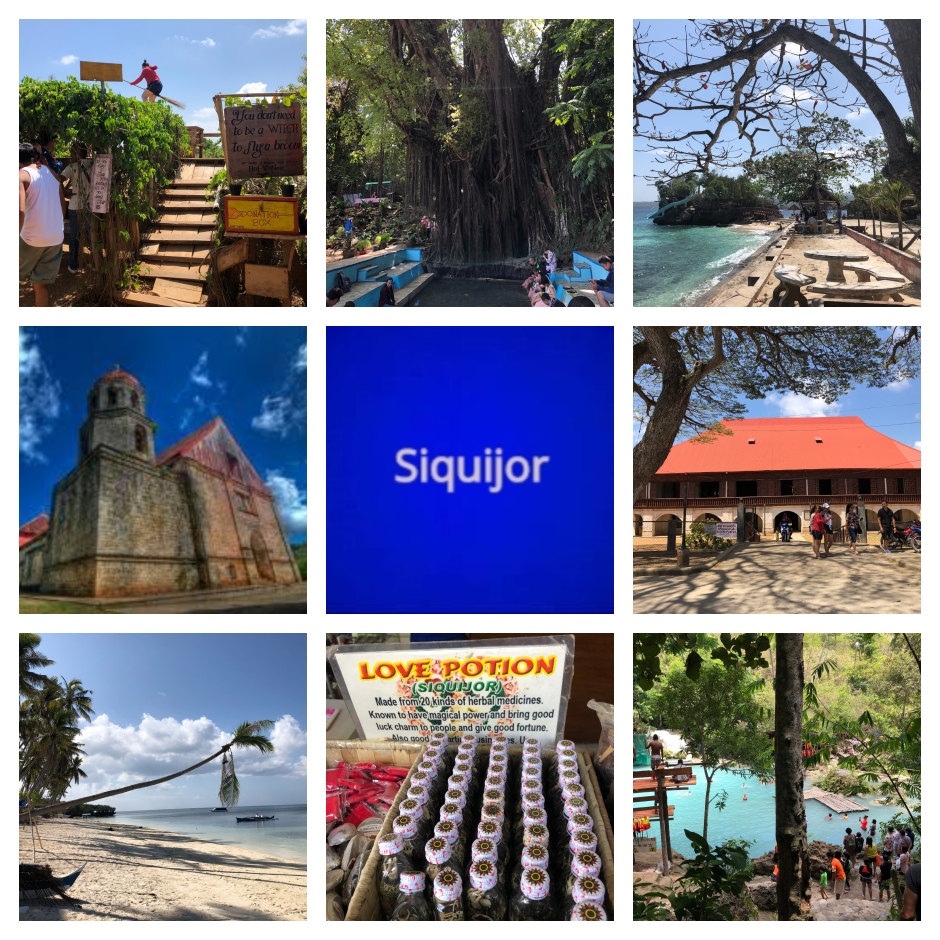

 Greg – originally posted to Flickr
Greg – originally posted to Flickr 
 Great news, target date of completion is May 21, 2019! Please give me feedback if this target was met.
Great news, target date of completion is May 21, 2019! Please give me feedback if this target was met. The Lazi Convent in 2012 (Carmelo Bayarcal, own work created June 10, 2012,
The Lazi Convent in 2012 (Carmelo Bayarcal, own work created June 10, 2012, 
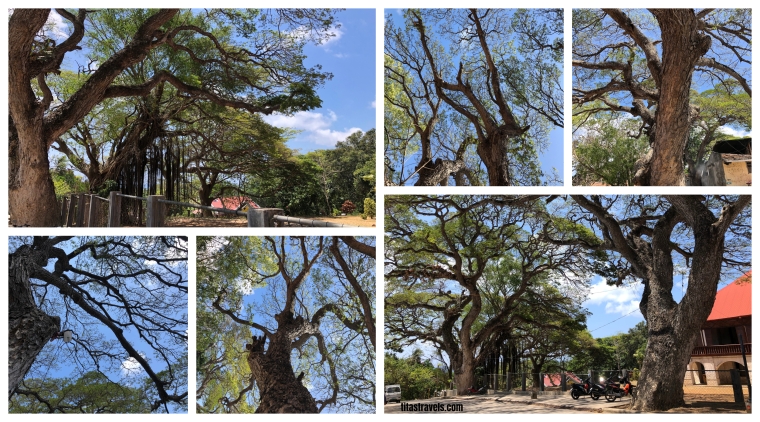
 Lazi Church in 2016 (Allan Jay Quesada, own work, 20 April 2016,
Lazi Church in 2016 (Allan Jay Quesada, own work, 20 April 2016, 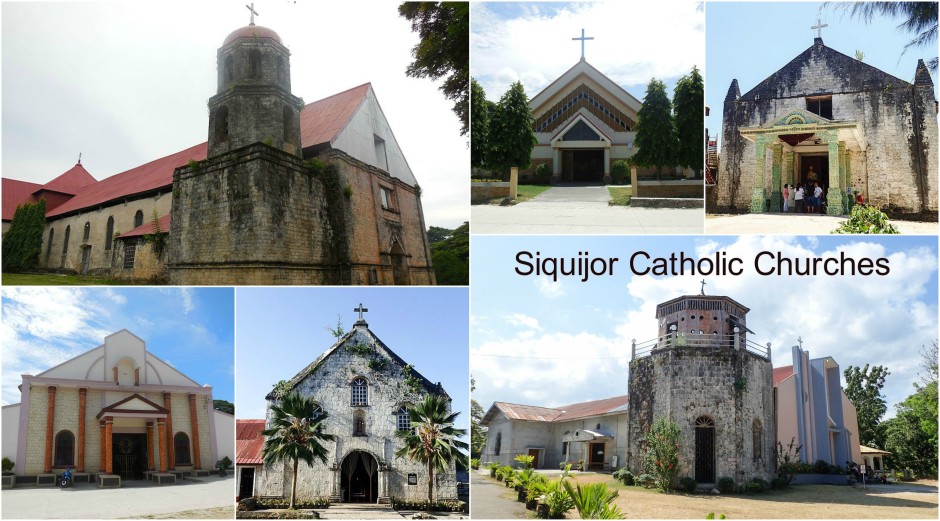
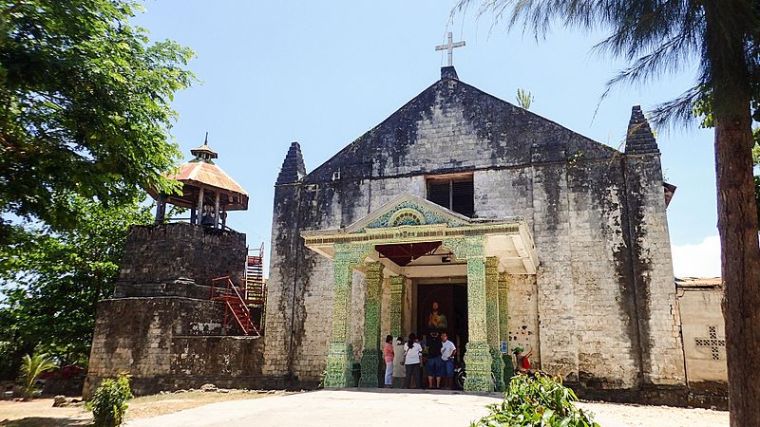 Source:
Source: 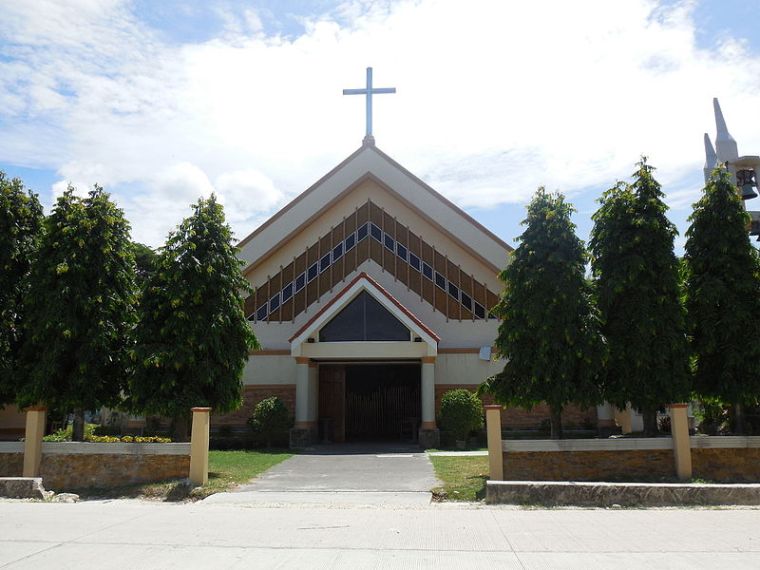 Source:
Source: 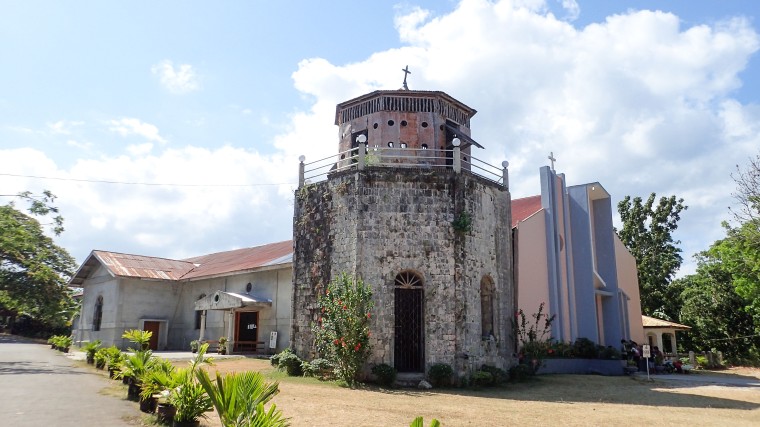 Source:
Source: 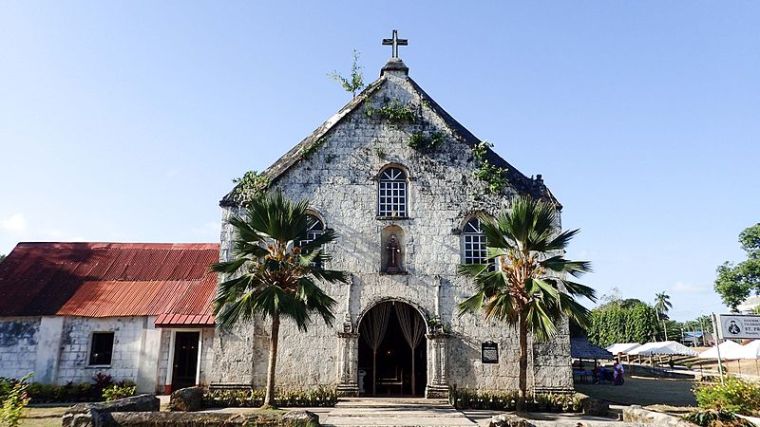 Source:
Source:  Source:
Source: 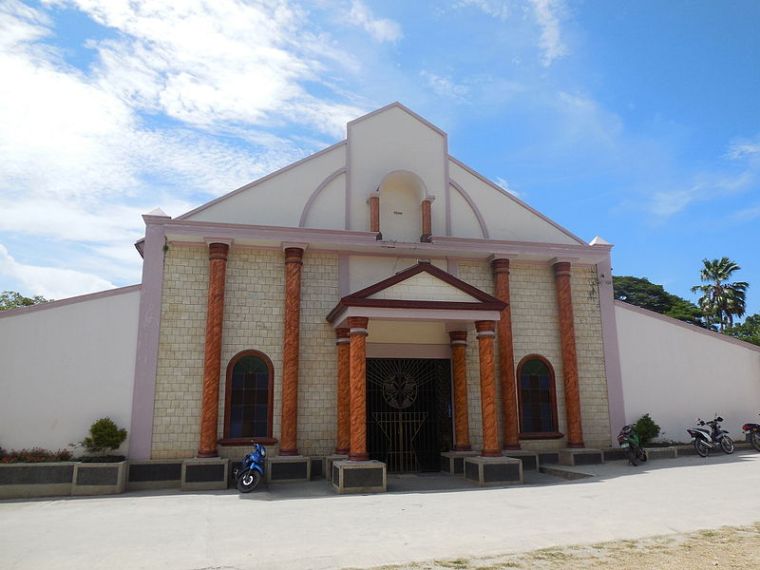 Source:
Source: 
 (l-r): Miagao Church, Paoay Church, San Agustin Church and Santa Maria Church (photographers: Wowleology and Patrick Roque, featured at
(l-r): Miagao Church, Paoay Church, San Agustin Church and Santa Maria Church (photographers: Wowleology and Patrick Roque, featured at  Tubbataha Reef (photographers: Nikswieweg, Ron Van Oers and Jun V Lao, featured at
Tubbataha Reef (photographers: Nikswieweg, Ron Van Oers and Jun V Lao, featured at  Batad Rice Terraces in Banaue and Nagacadan Rice Terraces in Kiangan (photographers: CEphoto, Uwe Aranas and Shubert Ciencia, featured at en.wikipedia.org/wiki/Rice_Terraces_of_the_Philippine_Cordilleras)
Batad Rice Terraces in Banaue and Nagacadan Rice Terraces in Kiangan (photographers: CEphoto, Uwe Aranas and Shubert Ciencia, featured at en.wikipedia.org/wiki/Rice_Terraces_of_the_Philippine_Cordilleras) Calle Crisologo, Vigan (photographer: Joelaldor,
Calle Crisologo, Vigan (photographer: Joelaldor,  Puerto Princesa Subterranean River National Park in Palawan; photo from
Puerto Princesa Subterranean River National Park in Palawan; photo from  Mount Hamiguitan inDavao Oriental; photo from
Mount Hamiguitan inDavao Oriental; photo from